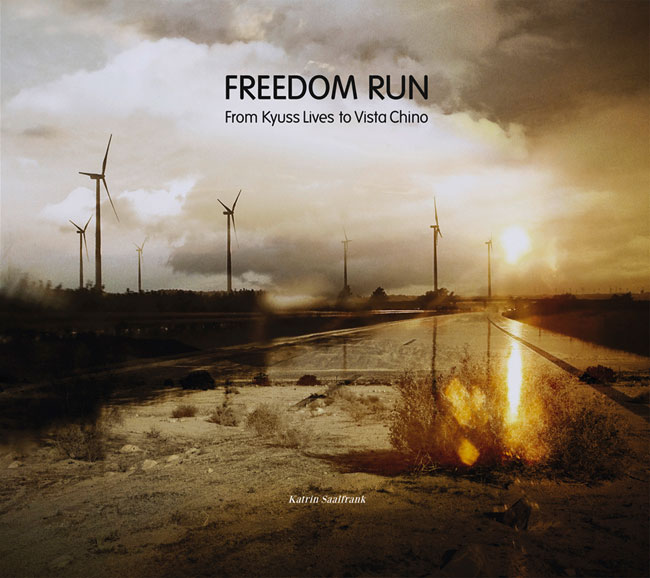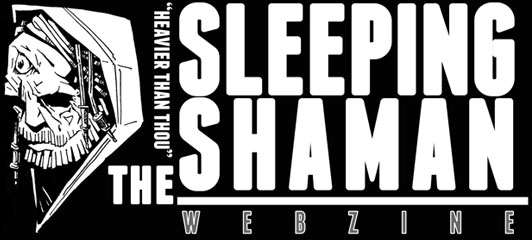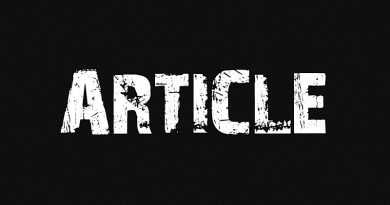Book Review: Freedom Run – From Kyuss Lives To Vista Chino
Readers of The Shaman are probably well-acquainted with the core subject matter of this beautifully produced photobook – Kyuss, the ‘desert scene’, Kyuss Lives, and subsequent reincarnation as Visto Chino – but as the effusive foreword from filmmaker Michael Brown describes there is also much here to engage us even without prior knowledge of this context.

The engagement with the subject from the book’s creator, Katrin Saalfrank, is clearly a deep and personal one. This passion project is built on the back of trips to the Southern California desert and also accompanying Kyuss Lives on their 2011 tour of Europe and takes us from the wide wild spaces of Joshua Tree, to the homes and studios of the musicians, to the stages and liminal spaces of a band on tour. We return again and again to the overwhelming distance and bewildering skies of the desert, a touchstone and obsession for both photographer and her subjects. As in the image on the cover, all elements are present here, a space of extremes where plants grow in contorted black and white architecture, or clouds boil above a still and parched land.
Depending on how you approach Freedom Run, there is a kind of narrative thread apparent, the pictures leading us from the band coalescing to the various venues and back to the desert. Words from Saalfrank and some ‘Desert Heads’ stitch the images together, and also draw our attention to some of the themes that the piece draws out. In a bare piece of text early in the book, Saalfrank draws our attention to the construction of mythos around artists, as has undoubtedly happened with Kyuss and others from the low desert, and our projection onto such people of our own meanings, as well as the temptation of the ‘true document’ that will reveal them to us at last.
In her pictures of people in this book (as in her work more broadly) the photographer shows us images of John Garcia, Brant Bjork, Nick Oliveri, Mike Dean, and Bruno Fevery that at once humanise and mythologise. There is a mix of portraiture and natural shots, whether at home with family, on stage and performing, in the nerves and waiting of touring, or of course in the everyday performance of their selves – as with Oliveri goofing around or Garcia’s earnest gaze. We see them at once in their vulnerability and in the frame of the artist, as well as the release of the music that is what holds all this together.
Freedom Run is remarkable as a document of a small part of musical history that will resonate with many, and also as an artistic work in its own right…
In this regard I find the images of people in the audience particularly interesting – there seems to be a surprising range of emotions in these groups of people, over there on the other side of the screen, these people who are us, looking back at the subjects on stage and sharing the experience of the moment, charged as it is with the meaning with which they invest it. The dense conceptual play of identity is balanced against images of the details that make up these moments – frayed tape and cables, plastic cups, half-empty bottles, and of course the natural elements of the desert itself. These objects and places are also a participant in the meaning-making, and part of the music of the work.
Freedom Run is remarkable as a document of a small part of musical history that will resonate with many, and also as an artistic work in its own right. The images are presented with great thought as to their correspondences and composition, whether in black and white contrast or colour work that veers from neon Americana to naturalist realism. There is an immediacy about the live performance pictures that finds a match in the power of desert landscapes, and an artistic eye that raises the book as a whole and beyond what could have been just a documentary piece.
I believe some copies are still available through Katrin Saalfrank’s website (this is an entirely self-published and DIY production) and I can only recommend this book to anyone with an interest in music and the power of the image.
Scribed by: Ian M


